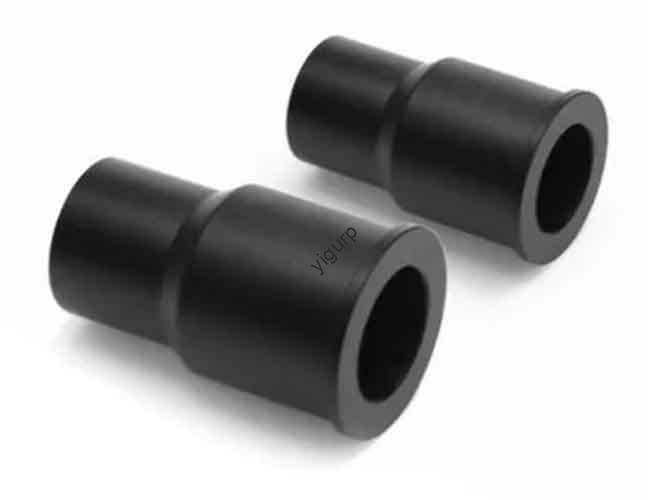When developing a water purifier, the prototype phase directly determines whether the final product meets user needs and industry standards. Among all prototype manufacturing methods, Обработка с ЧПУ stands out for its precision and reliability—but why is it indispensable for water purifier prototypes? This article breaks down key aspects of CNC-machined water purifier prototypes, от проектирования до тестирования, to help you understand its value.
1. Core Design Principles for CNC-Machined Water Purifier Prototypes
A successful prototype starts with design optimization tailored to CNC capabilities. Below are three non-negotiable design focuses:
| Дизайн аспект | Ключевые требования | Примечание о совместимости с ЧПУ |
| Functional Design | – Smooth internal water flow channels (no dead ends).- Tight filter element interfaces (for PP cotton, RO membranes, и т. д.). | CNC’s high precision ensures channel dimensions match filter sizes exactly. |
| Structural Strength | – Uniform shell thickness (to resist 0.3–0.6MPa water pressure).- Reasonable support structures (НАПРИМЕР., stiffeners). | CNC simulates real-use pressure via consistent material removal. |
| Maintainability | – Modular parts (removable panels, easy filter access). | CNC enables precise cutting of assembly clearances (avoids loose/tight fits). |
2. What Advantages Does CNC Machining Offer for Water Purifier Prototypes?
Compared to 3D printing or manual machining, CNC machining provides unique benefits that directly improve prototype quality. Вот сравнение бок о бок:
| Категория преимуществ | CNC Machining Performance | 3D Printing Limitation |
| Точность | Dimensional precision up to ± 0,05 мм (ideal for fine holes like water inlets). | Typical precision of ±0.1–0.3mm (risk of leaky joints). |
| Материальная универсальность | Processes plastics (АБС, акрил), алюминиевый сплав, и медь. | Limited to plastic filaments (poor for metal waterway tests). |
| Поверхностная отделка | Supports post-treatment (распыление, покрытие) for mass-production simulation. | Грубая поверхность (requires extra sanding; hard to replicate factory textures). |
3. Step-by-Step CNC Machining Process for Water Purifier Prototypes
Обработка с ЧПУ следует линейному, repeatable workflow to ensure consistency. The process is divided into 5 Ключевые этапы:
- Model Splitting & Программирование
Split the 3D model into machinable parts (НАПРИМЕР., оболочка, liner, filter holder). Выберите инструменты (high-precision ball nose cutters for curves) and optimize parameters (rotational speed, скорость корма) to reduce material deformation.
- Грубая
Quickly remove 90% избыточного материала, оставив а 0.5–1mm allowance для финиша. This step saves time while protecting the final shape.
- Отделка
Use low-feed, high-speed cutting to achieve a surface roughness of Ra0.8–Ra3.2—critical for smooth water flow and user comfort (нет острых краев).
- Special Structure Treatment
- Threaded/mounting holes: Machined via spiral milling to prevent slippage.
- Complex curved surfaces: Achieved via 5-axis CNC for seamless waterway connections.
- Связывание & Сборка
Use epoxy or instant adhesive to simulate mass-production methods (НАПРИМЕР., снимки, винты), testing real-world assembly logic.
4. Material Selection Guide for CNC-Machined Prototypes
Choosing the right material directly impacts prototype performance. Below is a practical material-scenario match:
| Тип материала | Applicable Prototype Parts | Ключевые функции |
| ABS Пластик | Shell, панель управления | Easy to polish/plate; бюджетный; mimics mass-produced plastics. |
| Прозрачный акрил | Water tank, internal viewing window | Высокая прозрачность; allows observation of water flow. |
| Алюминиевый сплав | Internal brackets, waterway joints | Легкий вес, коррозионная устойчивость; ideal for metal part testing. |
| Нейлон | Filter element card slots | Self-lubricating, износостойкий; easy to test filter replacement. |
5. После лечения & Функциональное тестирование
A CNC prototype is only valid if it undergoes rigorous post-processing and testing to simulate real use.
Key Post-Treatments
- Шлифование/полировка: Removes knife marks (critical for plastic shells’ feel).
- Ультразвуковая чистка: Eliminates residual cutting fluid (prevents waterway contamination).
- Simulation Treatments:
- Распыление (НАПРИМЕР., matte black/white) to replicate factory textures.
- Шелковый скрининг (логотипы, parameter labels) for user-friendliness.
- Покрытие (stainless steel luster) для металлических деталей.
Must-Perform Tests
| Тип теста | Цель | Критерии прохождения |
| Assembly Verification | Check filter installation, pipe docking, and button/display usability. | Smooth filter replacement; clear display view. |
| Water Flow Test | Verify waterway efficiency (use dye/flow meter) and leak resistance. | No leaks at 0.3–0.6MPa; uniform water flow. |
| Weathering Test | Simulate long-term use. | No plastic discoloration (UV test); no metal rust (corrosion test). |
6. Yigu Technology’s Perspective on CNC Machined Water Purifier Prototypes
В Yigu Technology, we believe CNC machining is the cornerstone of reliable water purifier development. В отличие от 3D -печати, CNC’s ±0.05mm precision solves common prototype pain points—such as leaky waterways or loose filter slots—that could derail mass production. We often recommend clients prioritize CNC for core parts (раковины, waterway liners) while using 3D printing for non-critical components to balance cost and quality. Например, a recent project using CNC-machined aluminum liners and ABS shells reduced pressure loss by 15% and cut filter replacement time in half. В конечном счете, CNC prototypes don’t just test design—they accelerate the path from concept to market.
Часто задаваемые вопросы
- How much does a CNC-machined water purifier prototype cost?
The cost ranges from 500 к 3,000 юаней за единицу, depending on part complexity and material. To control costs, focus on machining key components (НАПРИМЕР., раковины) and use 3D printing for secondary parts.
- How long does it take to make a CNC-machined water purifier prototype?
Typically 5–15 days. For faster turnaround, split complex parts into smaller components and process them in parallel.
- Can CNC machining simulate all mass-production features of a water purifier?
Yes—CNC supports post-treatments like spraying, покрытие, and silk screening to replicate factory finishes. It also tests assembly logic (НАПРИМЕР., снимки, винты) that match mass-production methods.
